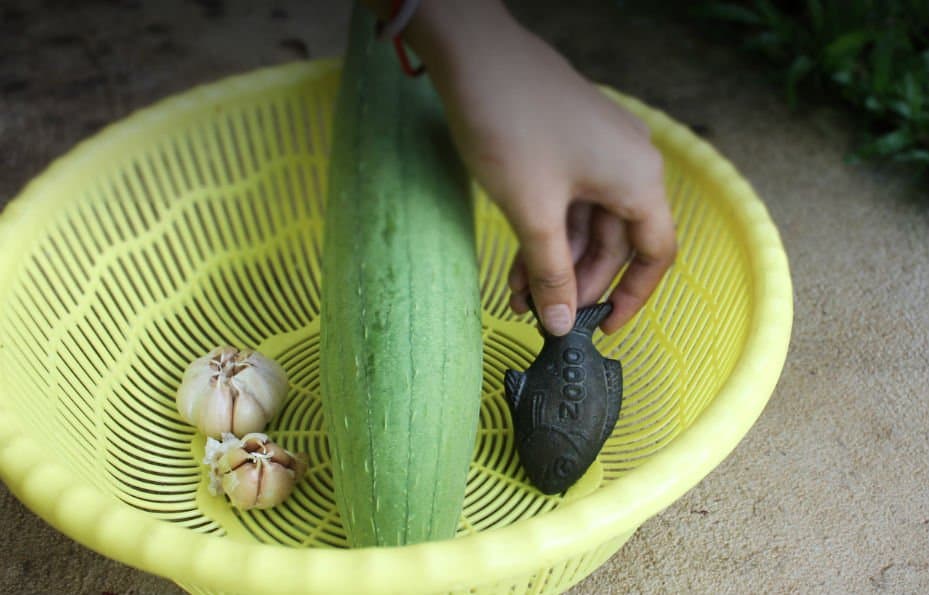A small metal fish designed for use in cooking to increase iron uptake is proving a great success in Cambodia and is now set to be used further afield. Could the Lucky Iron Fish spawn an end to iron deficiency across the rest of Asia?
You won’t find many cookbooks that recommend dropping a lump of metal into your dish and when the inventors of what is now known as Lucky Iron Fish (LIF) first came to market, their product often wound up as a doorstop or paperweight. This ad hoc repurposing was a missed opportunity for everyone concerned because that hunk of metal, intended to be dropped in cooking pots, was supposed to help fight iron deficiency — an issue that affects about half the world’s population — by releasing controlled amounts of the mineral into people’s meals.
Ingesting iron is an old idea. People have been doing it since 1,200BC (the Iron Age, in fact). But their methods haven’t always been effective or even safe. In parts of Africa there are some who eat red dirt and in parts of south-east Asia people have been known to cook with nails.
“It’s not a new idea,” says LIF chief executive Gavin Armstrong. “We just made it into a safe process by inventing something that releases the proper amount.”
But it can’t release the proper amount if people won’t use it. And when Armstrong and LIF’s co-founders first came to market, they were so focused on the iron ore they overlooked the end user. Their round lumps of iron went down like, well, lead weights.
“The key to LIF’s success has been its simplicity. There are no sensors or apps or trips to the drugstore – users just drop the iron fish in a cooking pot.”
The iron ingot is the brainchild of LIF’s Christopher Charles. In 2008 the Canadian science graduate visited Cambodia and was shocked by what he soon clocked were the effects of low iron levels in people. So he went from village to village only to find his invention repeatedly rejected. Then he learned about a fish species deemed a symbol of good luck for health and happiness in local folklore. Before long the fish-shaped ingots were reeled in. These were welcomed by people in villages and led to a boost in blood iron levels, virtually eliminating anemia.
In addition to the shape, the key to LIF’s success has been its simplicity. There are no sensors or apps or trips to the drugstore. Users just drop the iron fish in a cooking pot for soup, rice, or other entrees. That one meal will provide up to 75 percent of an individual’s suggested daily iron intake. And, unlike a real fish swimming around in a pot of boiling water, each fish lasts up to five years.
“When people hear that they just have to cook with this fish for ten minutes, they’re taken aback,” says Gavin Armstrong. “We are hammering down the fact that simplicity can work to address complicated issues.”
The Centers for Disease Control and Prevention estimates that roughly 20 percent of people in western countries suffer from iron deficiency. But in developing nations like Cambodia, where LIF got started, more than 70 percent of the population could be iron deficient. This condition can lead to anemia, weakness, impaired cognitive ability, compromised physical development in children, increased risk of illness, and even death.
“In western countries, people buy iron after a recommendation from a doctor,” says Armstrong’s business partner, Tania Framst, noting that many of us in the west take iron supplements in tablet form. “In other places, community members share with each other face to face. They try it, feel better, and are convinced.”
Like what you’re reading? Get your Positive News subscription here
Armstrong and Framst have settled on the same financial approach as Tom’s Shoes, a system that the social entrepreneur footwear company has called ‘one-for-one’ giving. For every LIF purchased in the west, the iron evangelists will donate one in a developing country, where it will be distributed by NGOs directly to families in need. They’ve already helped more than 89,000 people in Cambodia, where the project launched. And they are looking to expand into other markets, starting with south and south-east Asia.
“People always think of it as a third-world problem, but it’s not,” says Armstrong. “We are trying to bring that together. You can buy a sustainable solution that is not hard on the body and that is cost-effective, and you’re also helping someone else who is suffering from the same thing across the world.”
The fish are made from recycled materials and delivered in biodegradable packaging. And the manufacturing takes place at a Cambodian cooperative that hires disabled veterans injured by landmines during the reign of the Khmer Rouge. Those fish intended for distribution in the west are packaged in Canada through Arc Industries, which provides jobs to marginalised populations.

© Lucky Iron Fish
First published by Collectively
